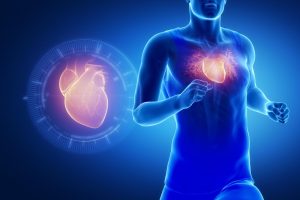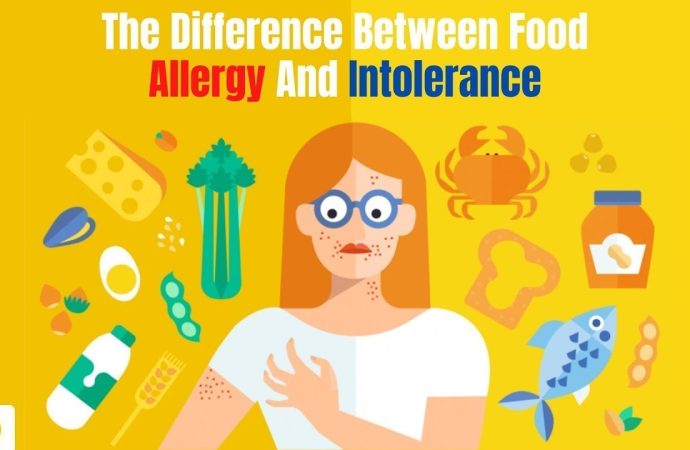Food Allergy and Intolerance: Allergy: An allergy is an immune system response to a specific substance, known as an allergen. When an individual with an allergy comes into contact with the allergen, their immune system perceives it as a threat and releases chemicals like histamines to defend against it. Common Symptoms: Common symptoms of a
Food Allergy and Intolerance:
Allergy: An allergy is an immune system response to a specific substance, known as an allergen. When an individual with an allergy comes into contact with the allergen, their immune system perceives it as a threat and releases chemicals like histamines to defend against it.

Image by: https://goalphakids.com/food-allergy-and-intolerance-the-difference/
Common Symptoms:
Common symptoms of a food allergy include:
Skin Reactions:
Hives (urticaria), red, raised welts on the skin.
Eczema, characterized by itchy, inflamed skin.
Itchy rash or swelling, especially around the face, lips, or eyes (angioedema).
Gastrointestinal Symptoms:
Abdominal pain or cramps.
Nausea and vomiting.
Diarrhea.
Respiratory Symptoms:
Sneezing, runny or congested nose.
Coughing or wheezing.
Shortness of breath or chest tightness.

Image by: https://atlantaallergydoctor.com/blog/what-do-food-allergy-symptoms-look-like/
Cardiovascular Symptoms:
Rapid or weak pulse.
Low blood pressure.
Fainting or lightheadedness.
Anaphylaxis:
Anaphylaxis is a severe, life-threatening allergic reaction that can occur rapidly.
Symptoms may include difficulty breathing, a drop in blood pressure, loss of consciousness, and a sense of impending doom.
Emergency medical attention is required for anaphylaxis.

Image by: https://www.medicalnewstoday.com/articles/320311
Treatment for Food Allergy:
Managing food allergies involves a combination of avoidance strategies, emergency preparedness, and medical interventions tailored to the individual’s specific needs.
1. Allergen Avoidance: The primary and most effective approach is to identify and strictly avoid the allergenic food(s). This requires careful reading of food labels, heightened awareness of potential cross-contamination, and communication with restaurant staff or food preparers to ensure the absence of allergens in meals.
2. Emergency Epinephrine: For individuals at risk of severe allergic reactions, carrying an epinephrine auto-injector (such as an EpiPen) is crucial. This device delivers a rapid dose of epinephrine, a life-saving medication that can counteract severe symptoms like difficulty breathing or a drop in blood pressure. Prompt administration of epinephrine is essential in the event of anaphylaxis.
3. Medications: Antihistamines may be used to alleviate mild allergic symptoms such as itching or hives. However, they do not provide a sufficient response for severe reactions like anaphylaxis. Corticosteroids may be prescribed in certain cases to reduce inflammation and prevent delayed allergic reactions.

Image by: https://parade.com/health/taking-supplements-on-an-empty-stomach
4. Immunotherapy: Allergen immunotherapy, commonly known as desensitization or allergy shots, is a treatment option that involves exposing individuals to small, gradually increasing amounts of the allergen under medical supervision. This process aims to build tolerance over time and reduce the severity of allergic reactions.
5. Emergency Action Plan: Developing and regularly reviewing an emergency action plan with a healthcare provider is crucial, especially for individuals at risk of severe reactions. This plan outlines specific steps to take in the event of accidental allergen exposure and provides guidance on when to use epinephrine.
6. Education and Support: Education is a key component of managing food allergies. Individuals, their families, and caregivers should be well-informed about allergens, label reading, and appropriate precautions. Support groups and resources, both online and offline, can offer valuable insights, shared experiences, and emotional support.
Food Intolerance:
Food intolerance does not involve the immune system but rather an inability to properly digest or metabolize certain substances. It often arises due to enzyme deficiencies or sensitivity to food additives.

Image by: https://www.health.harvard.edu/blog/dont-tolerate-food-intolerance-2016122310829
Symptoms:
some common symptoms of food intolerance:
- Bloating
- Gas
- Stomach cramps
- Diarrhea
- Headaches
- Fatigue
- Skin problems (rashes, eczema)
- Joint pain
- Heartburn
- Irritability or mood swings

Image by: https://www.medicalnewstoday.com/articles/325202






















Leave a Comment
Your email address will not be published. Required fields are marked with *